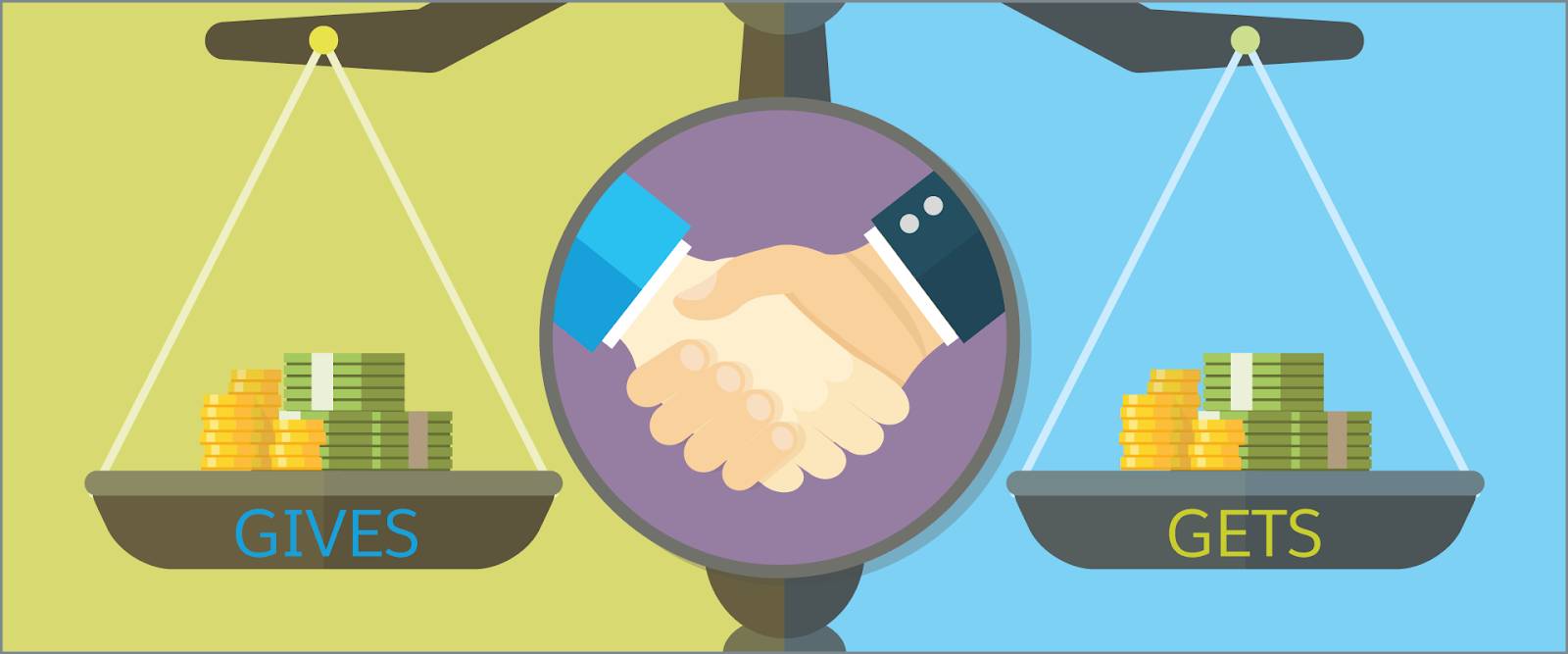Lock Down Your Sales Deal
Learning Objectives
After completing this unit, you’ll be able to:
- Review the Give and Get of deal negotiation.
- Describe common deal dials.
Give a Little, Get a Little
Negotiations are, by nature, all about compromise. Generally, you give something, to get something. When both sides make good compromises, you’re more likely to wind up with a deal that makes everyone happy.
When pricing your deal, help your customer see how concessions made on both sides lead to a win-win. As a rule of thumb, look at all of the parts of a deal as a whole, and find balance between what you’re giving and what you’re getting.

Let’s break this down a little further, and look at nine success factors in negotiations.
- Ask Questions. Know the customer’s pain points.
- Compare apples to apples. Don't give too much away early on.
- Plan ahead. Model what you’re going to offer, and know what to keep in your back pocket.
- Plan concessions. Plan which negotiating points, also known as dials, to turn. (Find more details on dials in the next section.)
- Know your priorities. Decide what is most important to give and get.
- Keep your customer’s perspective in mind. Build in quantity wins for both procurement and executives.
- Engage support teams. Do this early in complex deals, and establish a plan.
- Price your deals appropriately. Avoid starting new customers with bad pricing! Relative pricing rarely gets better.
- Make your customers aware of the benefits. Help your customer see the gives and the gets.
Negotiations tend to go poorly when approaching customer demands one at a time. The best negotiations are more holistic and demonstrate your understanding of all of the customer’s concerns, and balance what is given with what you’re getting back in return.
Dial in Your Deal
Deal making is all about negotiating. To make negotiations easier, as we mentioned, we suggest you use something we call dials. Dials are the variables most commonly adjusted when negotiating a deal.
We call them dials because they’re variables you can dial up and dial down during negotiations. They are the bread and butter of the conversations you have with customers.
Let’s look at the six dials most commonly used by Salesforce to lock in a deal.
- Basic Dials
- Number of users
- Contract length
- Price per user
- Complex Dials
- License rollout/timing
- Business terms/main service agreement (MSA), also known as the terms of the contract
- Product mix
No matter how complex your deal is, you can turn any of those dials affecting AOV and TCV. Just remember to consider what each side gives and gets when moving them.
Now that you know about deal structures, success factors for negotiations, and deal dials, get out there and get those deals locked down.